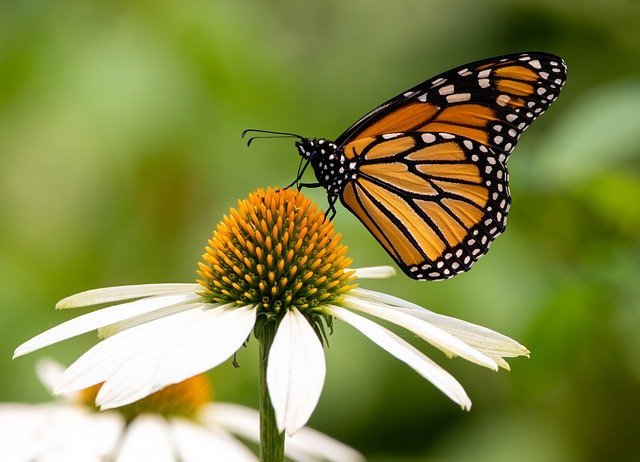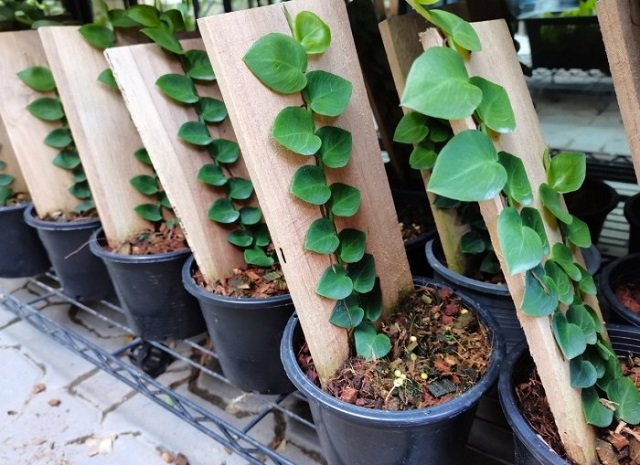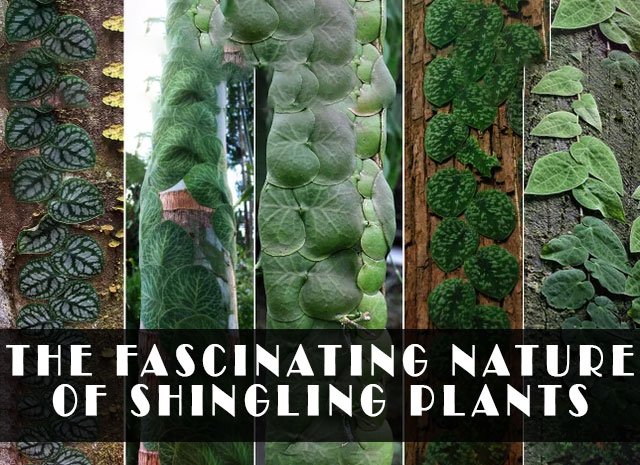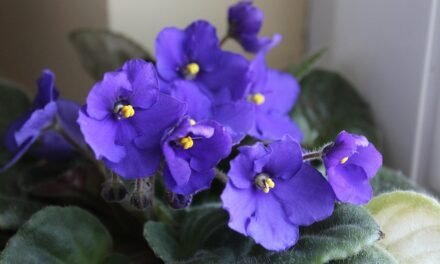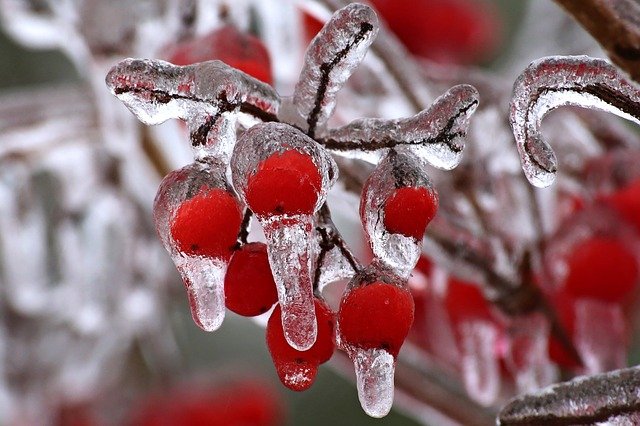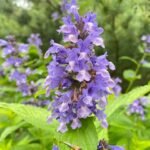Incorporating monarch butterfly plants into your garden has more benefits than you can imagine. Not only does it allure monarch butterflies, but you will also be contributing to the survival of this breathtaking species.
Monarchs are those intricate bright orange-colored butterflies that we all grew up watching. But these extraordinary species are, unfortunately, near to extinction. Extensive deforestation in Mexico and a decrease in the number of host plants and nectar plants for monarchs are two of the main reasons for the decline in the population of these beloved butterflies.
If you cannot wrap your mind around what we are talking about, let us explain this briefly.
What are Monarchs?

Monarchs are striking orange and black colored butterflies with a specific arrangement of white spots all over their bodies. Despite being so light in weight and fragile, these butterflies migrate extraordinary distances in changing weather.
Can you believe it? Neither do we!
Monarch butterflies cover a distance of approximately 3000 miles during migration.
Fun Fact About Monarchs
- Did you know the reason behind their striking color pattern? The reason for this is to warn potential predators that they are poisonous. This warning wards off all the animals that have intentions of consuming them. And even if an inexperienced predator eats an adult monarch or its caterpillar, they taste so bitter that they spit them out on the spot! Interestingly, the bright color pattern feature of the monarch was copied by another butterfly, i.e., adult viceroy butterfly, just so that it can save itself from predators too. So clever!
- Monarch butterflies, which are only alive for a duration of 2-3 weeks during summers, can survive for up to 9 months during overwintering! This generation is called the super generation.
Where do they migrate?
Monarchs spend springs and summers in Canada and the North American continent, a period in which they breed. During the fall season, they then start their migration from Northeastern U.S. and Canada towards Southwestern Mexico, where they reside in an extensive region for overwintering. You must have witnessed their migration if you live in either of the three countries. (Overwintering is the phenomenon in which the animal remains mostly inactive and does not reproduce to preserve its energy until the weather condition gets better.)
Needs for Migration
Just like all the other butterflies, monarchs also need nectar-producing plants to gain energy for their survival. Moreover, you can imagine the amount of energy needed to travel such large distances. Nectar from flowers is the only source of energy they get on the way as they migrate from one country to another. Not only this, monarch butterflies spent their entire overwintering period surviving solely on the nectars they get from the nectar-rich habitat they get along the way.
Hence it is vital for monarch butterflies that they have access to nectar from nectar-producing wildflowers with variable yet overlapping bloom times. It ensures that they receive nectar from one source or the other that acts as fuel for their expedition.
What are host plants for monarchs?

The host plants for monarchs are milkweeds (Asclepias spp.). Now you may ask, what are host plants? Host plants are those that are the source of food for the larval form of butterflies. Milkweeds are the only plants that are crucial for the survival of hatched monarch larvae so that they can develop into caterpillars.
The Purpose of Dependency on Milkweed
You must have seen these brightly contrasting caterpillars feeding actively on the leaves of Milkweed.
Did you know a monarch caterpillar can feed on up to 20 leaves in its lifetime?
The demand for milkweed host plants is, therefore, quite a lot. The question that arises here is that why, of all the plants in nature, Milkweed is preferred by monarch butterflies? The reason behind this is the chemical constituency of milkweed.
Milkweeds are toxic to vertebrates(animals with a backbone) as they produce a cardiac(heart) arrest poison in them. Since it is harmless to invertebrates such as monarch butterflies, they adapt these protective characteristics by feeding on them.
Can all the Milkweed variations be used?
Milkweed occurs in various types all over the world. But be aware, you cannot use all of the 100+ milkweeds varieties found in the U.S. Only 25 of the species found in the U.S. can be used for monarch butterflies.
Therefore, you should always pay attention to the genus of the Milkweed you are purchasing. Milkweeds belonging to the genus Cynanchum are called swallow-worts. These plants may fool monarchs to lay eggs on them; however, their larvae fail to feed on them. Hence, milkweeds of the Asclepias genus are the only best monarch butterfly host plants.
Why do you need to plant host and nectar plants for monarch butterflies?

They are rapidly reducing the milkweed population.
Milkweeds are of utmost importance for the survival of monarchs. However, we as humans have done little to save them. Since milkweeds are poisonous to vertebrates (such as pets and cattle), we have uprooted most of this naturally-occurring precious plant to save our animals. Deforestation, extensive urbanization, and lack of knowledge have greatly impacted the population of monarchs.
Did you know that the population of monarch butterflies has reduced to less than 1/10th of the original population in the last 20 years?
This is a serious issue that we must all contribute to, as a community, to save the reducing numbers of monarchs.
Uprooting of wildflowers
Besides milkweeds, nectar plants give energy to the adult monarchs to continue their migration. Human activity has greatly impacted the population of nectar-producing flowers in the wild too. You can guess the negative effect of lack of food can have on a fragile butterfly.
This is why it’s equally important to plant nectar plants as they will act as refueling stations for butterflies to build up their fat reserves, which will help in migration, reproduction, and the process of overwintering. You can also assist in setting up nectar corridors, along with your neighborhood. These are specifically nectar-rich plants that bloom to their full in summer and spring that help monarchs to feed to their full and guide them in their migration.
Types of Nectar Plants Suited for Monarchs

Wildflowers have different blooming times. Therefore their suitability depends on the region in which you reside. You can check the migration timeline of the monarch butterflies online to check the season in which they will be present at your location.
Best Wildflowers for Monarchs in Spring
Always go for early season blooms if you want to support the monarchs returning from Mexico
The varieties that you can choose are:
| Indian Blanket | Siberian Wallflower | Sweet Alyssum |
All the above mentioned bright colored blooms are Monarch favorites to feed on
Best Wildflowers for Monarchs in Summer
The importance of nectar-producing flowers for the survival of monarchs is so underrated. A large population of blooms can support these invertebrates in their journey ahead. The annual or perennial flowers you can choose from are:
● Purple coneflower
● Zinnia
● Lavender hyssop
● Sulfur cosmos
● Fake sunflower
The top three varieties are favorites among monarchs. These wildflowers act as a magnet for these magnificent butterflies. Moreover, they are easy to grow, and their bright colors add a variation to your garden.
Best Wildflowers for Monarchs in Fall
You can help monarchs to build up their fat reserves to survive through fall by planting these wildflowers:
● New England Aster
● Showy goldenrod
● Aromatic Aster
● Joe Pye Weed
● Liatris
A collection of these late blooms can tremendously assist milkweeds to gain energy to survive overwintering.
What are the best milkweeds for monarchs?
Milkweeds are essential for the proliferation of monarch butterflies. There are many varieties of milkweeds you can choose from, but it is always best to stick to the variation native to your area. The most commonly used milkweeds for monarchs are:
● Swamp milkweeds (also known as Pink Milkweed, its flowers are deep pink in color)
● Butterfly weed (it has yellow-orange to bright orange-colored flowers)
● Common Milkweed (it has pinkish-purple flowers that have a pleasant odor)
● Purple Milkweed (their flowers are magenta red in color)
● Showy Milkweed (their flowers are rose-colored, and they have large blu green leaves)
● Whorled Milkweed (their flowers are greenish-white, and they have narrow leaves)
Be Cautious of Tropical Milkweeds
Tropical milkweeds are a native species of Mexico. Since these milkweeds bloom throughout the year, they serve as a grave danger for the lifecycle of monarchs if planted in areas besides Mexico.
A major reason for this is because native milkweeds of the U.S. and Canada die-off in extreme winters. This phenomenon motivates monarch butterflies to migrate to overwintering grounds.
The disadvantages of planting tropical milkweeds outside their region are:
● It motivates monarchs to cut off their migration abruptly
● It suggests monarchs reproduce and lay their eggs during winter. This act destroys a generation of butterflies
● Tropical milkweeds are also linked with the spread of the protozoan parasite(Ophryocystis elektroscirrha), which kills monarchs
Hence, the plantation of tropical milkweeds is discouraged.
Tips and Tricks to Attract more Monarchs to your Garden

The requirements of habitat that you must consider are:
The Local Variety is Best
Always look for milkweed seeds in your local nursery or check with distributors selling local varieties to successfully establish these host plants. Whether you want to add this plant to your farm or your garden, you must always go to the native species of milkweeds if you wish to preserve the species of monarch butterflies.
Plant as Many Milkweeds as Possible
Planting just one or two milkweed pants will not do much. You just need to stick to just 2 or more varieties of milkweeds native to your area and plant at least 6 milkweeds of each category. Always go for cluster arrangements rather than individual plants to attract monarchs to your garden. Planting multiple same-category plants will act as a lifesaver if monarch butterflies lay eggs on them. This will help you meet the high consumption demands of monarch larvae.
Try to Include a Variety of Wildflowers too
Wildflowers will serve as nectar stations for the monarch butterflies to refuel on. Try arranging these nectar plants too in the form of a cluster so that monarchs can visualize these blocks of colors and eventually get attracted to them. Remember that adult monarchs need energy for reproduction too. Your wildflowers can motivate them to lay their eggs on the milkweeds of your garden.
Stay Away from Pesticides and Herbicides
Control your urge to use pesticides on newly planted seedlings of milkweeds and nectar plants. Spraying artificial pesticides and herbicides can seriously impact monarch butterfly generation. It has been noted that even if monarchs lay their eggs on such milkweeds, their caterpillars fail to develop their true colors and thus are unable to thrive.
Sun Exposure of Monarch Butterfly Plants
Monarchs enjoy full sun exposure; therefore, you must plant your milkweeds and wildflowers at the sites which receive sunlight throughout the day or at least 6 to 8 hours a day. Monarch butterflies rarely go for milkweeds planted in shady areas.
Wind Direction Matters too
As expected, monarchs do not prefer to go near the plants which are placed in extremely windy areas. You can foresee these fragile creatures being blown away by a gust of wind. Monarchs prefer plants available in light windy regions so that they can easily roam and fly around the arrangements.
Add a Source of Hydration
Make a small water puddle on the ground with large soil particles for the monarch butterflies to feast on. Make sure not to miss this magnificent sight!
The Influence of Proximity of a Tree or Shrub to Garden
Evergreen trees act as a roosting site for these butterflies. Monarchs tend to gather in groups and rest together on large trees at night during their migration. Woody shrubs, on the other hand, can provide shelter to butterflies in excessive wind or rain. Hence, the proximity of both these structures can positively influence the visiting of monarchs to your butterfly garden.
There will be times when you will not be able to control the events that occur in your garden. Be it the eating of monarch caterpillars by birds or lizards. You cannot manually stop all the predators as it will eventually jeopardize the natural predator-prey phenomena.
Let nature run its course. There will come a time when most of the caterpillars will turn into beautiful monarch butterflies in front of your eyes. But, until that time, there is no other option than to wait. Just like you cannot force monarch butterflies to visit your garden; similarly, you cannot guarantee that all caterpillars successfully develop into awestruck monarch butterflies.

